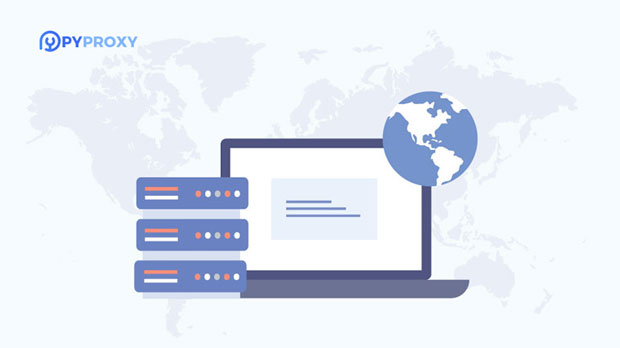In the context of HTTP protocol and large-scale requests, businesses and developers are constantly on the lookout for solutions that offer cost-effective performance while maintaining reliability and speed. One such solution that has gained attention is PYPROXY, a proxy management tool designed to handle large volumes of requests. This article explores whether PyProxy provides a better cost-benefit ratio compared to other alternatives, taking into account factors such as performance, scalability, and overall value for users in the HTTP protocol environment. Understanding HTTP Protocol and Large-Scale RequestsThe HTTP (Hypertext Transfer Protocol) is the foundation of any data exchange on the World Wide Web. It is essential for retrieving web pages, sending data, and enabling the communication between clients and servers. Large-scale HTTP requests involve the need for numerous connections over a short period, such as scraping, accessing multiple APIs, or conducting automated testing. In such cases, handling a significant amount of concurrent traffic becomes crucial for businesses that rely on real-time data or those who need to manage heavy web traffic efficiently.For large-scale HTTP requests, performance is paramount. Request handling, the ability to scale, and the effectiveness of proxy solutions play a significant role in determining the overall cost-efficiency of the process. Here, the use of proxies like PyProxy comes into play as they can ensure smooth and uninterrupted HTTP requests, even under high load conditions.The Role of Proxies in HTTP RequestsProxies act as intermediaries between the client and the server. When large volumes of requests are sent, using proxies helps to distribute the load, reduce latency, and maintain anonymity. A reliable proxy solution can manage large-scale requests by handling multiple connections simultaneously, balancing traffic, and ensuring that the client's IP address remains hidden to prevent blocking by servers.In large-scale requests, the right proxy solution ensures that clients can bypass throttling and restrictions often imposed by servers, especially when conducting web scraping or automated interactions with external services. Introduction to PyProxy: What Is It?PyProxy is a Python-based proxy management tool designed to handle large numbers of HTTP requests efficiently. It provides the infrastructure needed to manage proxy lists, distribute requests across different proxies, and rotate IPs seamlessly. This feature is particularly valuable in large-scale applications like web scraping, automation tasks, or accessing APIs with high request limits.Performance and Scalability of PyProxyOne of the most important factors in large-scale requests is performance. When dealing with a high volume of requests, speed and reliability must be prioritized. PyProxy provides a robust solution by offering fast proxy rotation and managing large proxy pools. With the ability to switch IP addresses frequently, it ensures that each request is treated as a unique session, preventing the server from blocking or throttling the connection.Additionally, PyProxy supports load balancing, which means that requests are evenly distributed across available proxies. This ensures that no single proxy is overburdened, and the overall system performance remains consistent, even under stress. By enhancing request speed and reducing server restrictions, PyProxy is able to maintain a smooth process flow for users.Cost-Effectiveness of PyProxyWhen considering the cost-effectiveness of PyProxy, several aspects must be evaluated:1. Initial Setup Costs: PyProxy is open-source, meaning there are no initial costs for acquiring the tool itself. This makes it an attractive option for businesses and developers looking for a cost-effective solution without significant upfront investment.2. Proxy Pool Management: PyProxy provides automated management of proxy pools, allowing users to switch between proxies easily. This functionality reduces the need for manual intervention, which can result in reduced labor costs and improved efficiency.3. Bandwidth Utilization: Effective proxy rotation helps optimize bandwidth usage. By balancing traffic among different proxies, PyProxy ensures that bandwidth is used efficiently, avoiding overuse of any single connection and reducing potential server overload.4. Scalability: PyProxy can scale with increasing demand, allowing users to add more proxies to their pool as necessary. This means that as traffic grows, PyProxy can accommodate the increase without requiring a major overhaul or additional significant investments in infrastructure.5. Reduced Risk of IP Bans: By rotating proxies and spreading out the traffic load, PyProxy helps prevent IP bans, which can cause disruptions in large-scale operations. This reduces the potential costs associated with downtime or the need to acquire new IP addresses.Overall, PyProxy offers a balance of performance and cost-efficiency, especially for users who need to handle a large number of HTTP requests without relying on expensive enterprise solutions.Comparing PyProxy with Other Proxy SolutionsWhile PyProxy provides several advantages, it’s important to compare it to other proxy management solutions. There are several factors to consider when deciding which proxy solution is right for a given project.1. Price: Many commercial proxy solutions can be expensive, especially for large-scale operations. While PyProxy may require some technical setup, its open-source nature makes it an attractive, low-cost alternative to premium services that charge based on the volume of requests or the number of proxies used.2. Reliability: PyProxy offers high reliability, but for mission-critical applications, some businesses may opt for premium services that offer more support and guaranteed uptime. Commercial solutions often provide 24/7 customer service and service-level agreements (SLAs), which may be necessary for some organizations.3. Customization: PyProxy allows for customization and flexibility. It can be integrated into a variety of workflows, but this requires a certain level of technical expertise. Businesses that require a plug-and-play solution might prefer commercial products with more user-friendly interfaces and built-in features.4. Support: One drawback of PyProxy is the lack of dedicated customer support. Being an open-source project, users rely on community support and documentation. For some businesses, having access to technical support 24/7 might outweigh the cost savings.Real-World Applications of PyProxyPyProxy is well-suited for a variety of real-world applications that involve large-scale HTTP requests. Some examples include:- Web Scraping: PyProxy can distribute scraping tasks across multiple proxies, ensuring that websites do not block the user’s IP address.- API Interactions: For users working with APIs that have rate limits, PyProxy can manage requests by rotating proxies, allowing users to exceed typical API request limits without being blocked.- Automated Testing: PyProxy can be used in automated testing scenarios where multiple requests need to be sent simultaneously or in rapid succession, without triggering rate-limiting systems.Conclusion: Is PyProxy a More Cost-Effective Solution?In conclusion, PyProxy offers a cost-effective solution for managing large-scale HTTP requests. It provides fast, scalable, and reliable performance while maintaining low costs due to its open-source nature. For businesses that require efficient proxy management without the need for high upfront costs, PyProxy is an excellent choice. However, for organizations that prioritize dedicated support, high availability, and ease of use, commercial proxy solutions might be more appropriate.Ultimately, the decision to use PyProxy should depend on the specific needs of the business, its technical capabilities, and its budget. For those willing to invest time into setup and management, PyProxy offers a highly effective, low-cost alternative for handling large-scale HTTP requests.
Sep 25, 2025


































































